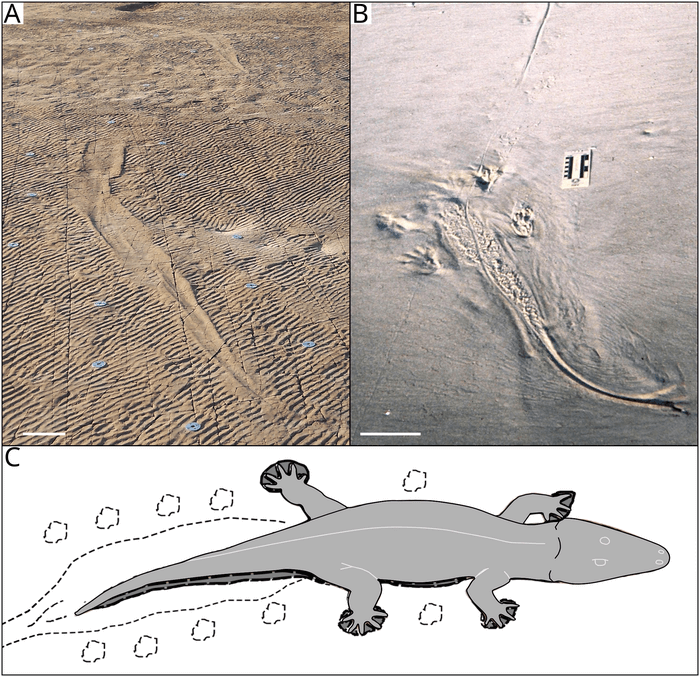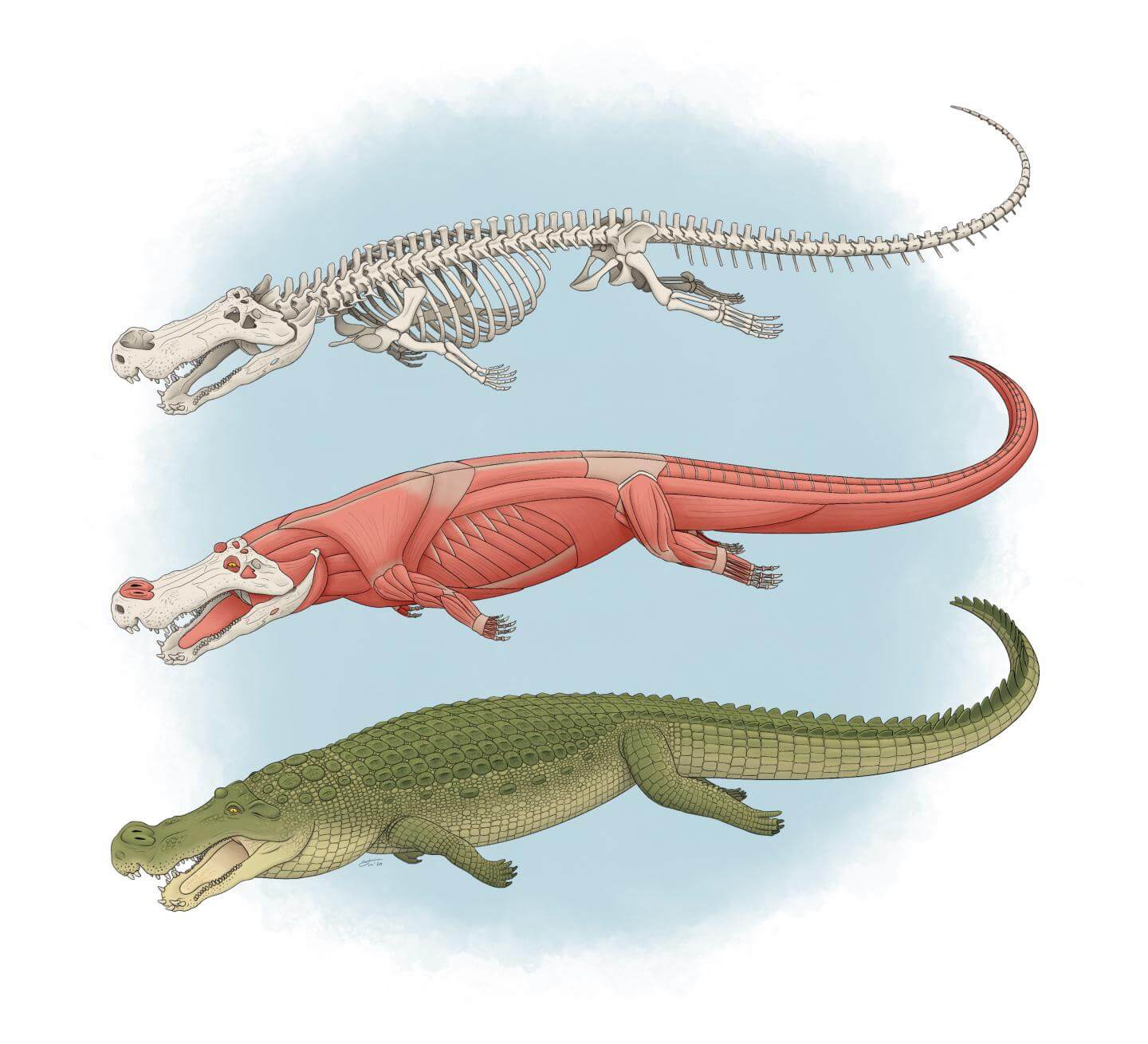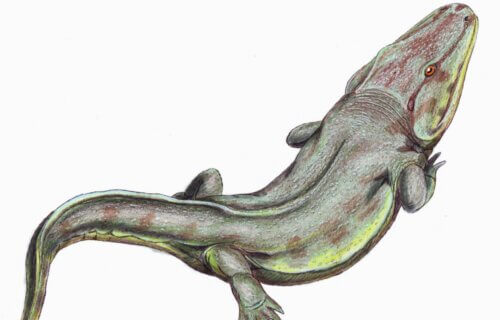JOHANNESBURG, South Africa — A colossal crocodile-like frog roamed through rivers over 250 million years ago, predating the dinosaur era, a new study reveals. Scientists identified the ancient amphibian, standing six-and-a-half feet tall, from fossilized remains discovered in South Africa’s KwaZulu-Natal Province. The fossils were preserved in rocks that once comprised the floor of a tidal flat or lagoon in the prehistoric Karoo Sea.
“The findings of the study are significant because they help to fill in gaps in our knowledge of these ancient animals. The remarkable tracks and traces preserved on the Dave Green palaeosurface are a window onto the shoreline of the Karoo Sea roughly 255 million years ago,” says Dr. David Groenewald, the study’s lead author from the University of the Witwatersrand in South Africa, in a media release. “They provide direct evidence of how these animals moved and interacted with their environment.”
The creature, named Rhinesuchid temnospondyl, appears to be a hybrid of a crocodile and a large salamander. The international research team examined seven body impressions and numerous tail marks during their investigation. They believe these tracks come from one or two creatures moving from one resting spot to another, possibly in search of food.

(credit: Groenewald et al., 2023, PLOS ONE, CC-BY 4.0)
Known primarily from skeletal remains, the extinct predator’s movement and interaction with its environment are further illuminated by this exceptional set of trace fossils. The wavy shape of the tail marks indicates that it swam using continuous side-to-side tail movements, much like modern crocodiles and salamanders. The body impressions, coupled with a relative lack of footprints, suggest that it swam with its legs tucked against its body, similar to a crocodile. The fossils portray an active lifestyle of swimming and walking along the bottom, a conclusion made possible due to the extraordinary preservation of the site.
This location serves as a primitive animal graveyard, containing a wealth of early tetrapods that lived on land and in water. It also holds the remains of ancient fish and invertebrates, making it a critical site for understanding Permian ecosystems.
“In addition to its remarkable scientific contribution, this study also demonstrates how important paleontological discoveries are often made by curious people bringing their findings to the attention of paleontologists,” Dr. Groenewald concludes.
The study is published in the journal PLoS ONE.
Other prehistoric crocodiles were terrorizing North America
These huge salamanders weren’t the only crocs roaming the Earth in prehistoric times. For present-day Americans, some lived much closer to home.
A study from 2020 discovered that there wasn’t just one species of giant crocodiles running around in ancient North America, but three! Growing to be 33 feet long, scientists believe this beast is one of the largest crocodylian species to ever exist. They call it Deinosuchus, meaning “the terror crocodile.” It’s something you’d expect to see in “Jurassic Park,” with fossils showing these prehistoric predators ate dinosaurs for lunch with teeth as large as bananas.

Paleontologists say these three distinct breeds of terror crocs lived all across North America between 75 and 82 million years ago. During this time, the continent was actually split in two by a shallow sea stretching from the Arctic Ocean to the Gulf of Mexico.
Researchers say two species, Deinosuchus hatcheri and Deinosuchus riograndensis, lived in the west from Montana to northern Mexico. The other species, Deinosuchus schwimmeri, was an east coast terror roaming from New Jersey to Mississippi.
South West News Service writer Mark Waghorn contributed to this report.


Wonder how big their tadpoles were.
Too bad we can’t de-extinct them.